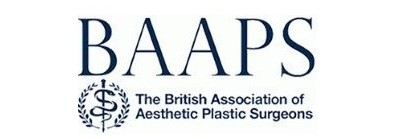Ganglions and Cysts
What is a ganglion?
A ganglion is a benign swelling that typically forms around joints or tendons, usually in the hand or wrist. It is a fluid-filled sac that contains a jelly-like fluid.
Ganglions are also known as ganglion cysts, and their size can vary from small, pea-sized lumps to larger, golf ball-sized masses. They may be soft or firm to the touch, depending on the size and location. While ganglion cysts are generally harmless, they can sometimes cause pain, discomfort, or limited mobility, especially if they press on a nerve or restrict joint movement. If they press on a sensory nerve, tingling or altered feeling can occur. In such cases, medical intervention, such as aspiration or surgical removal, may be necessary.
What are the common locations of ganglions?
Wrist: Ganglion cysts often appear on the back (dorsal) or front (volar) side of the wrist. Dorsal wrist ganglions are more common than volar wrist ganglions.
Hand: Ganglions can form at the base of the fingers, particularly near the joints or on the palm side of the hand.
Fingers: Ganglions can develop near the joints of the fingers or around the distal interphalangeal joint, leading to a mucous cyst. This appears as a small lump at the base of the nail and can cause a ridge to develop on the nail.
Ankle and Foot: While less common, ganglion cysts can occur near the ankle joint or on the top of the foot.
Knee: Ganglion cysts may develop around the knee joint, such as in the case of a Baker’s cyst, which forms at the back of the knee.
What causes ganglions?
Joint or tendon irritation: Trauma, injury, or chronic joint stress can cause the tissue around the joint or tendon to become inflamed, leading to the formation of a ganglion cyst.
Synovial fluid leakage: When synovial fluid leaks from the joint capsule or tendon sheath, it may accumulate in a sac-like structure, forming a ganglion cyst.
Degeneration: Age-related degeneration of joint and tendon tissue may contribute to the development of ganglion cysts.
Unknown factors: In some cases, the exact cause of ganglion cyst formation is not well understood, and they may arise without any apparent reason.
It is important to note that ganglion cysts can affect people of all ages. Some ganglia may resolve spontaneously.
What are the non-surgical treatment options for ganglions?
Non-surgical treatment options for ganglions include:
Observation: In some cases, if the ganglion cyst is not causing pain or limiting function, the doctor may recommend a “wait and see” approach, as ganglions may resolve spontaneously over time.
Aspiration: This procedure involves using a needle and syringe to drain the fluid from the cyst. It is a minimally invasive option that may provide temporary relief. However, the cyst commonly recurs, as the aspiration does not remove the cyst’s root or sac. It is inadvisable to drain the cyst outside a clinical environment as it may result in a severe infection of the joint (septic arthritis).
Anti-inflammatory medication: Over-the-counter nonsteroidal anti-inflammatory drugs (NSAIDs), such as ibuprofen or naproxen, may help alleviate pain and inflammation associated with ganglion cysts. However, these medications do not treat the cyst itself.
A doctor can provide guidance on the best course of action based on the size, location, and severity of symptoms from the cyst taking into account the patient’s medical history and preferences.
When should a ganglion be operated on?
A ganglion cyst may require surgical intervention in the following circumstances:
Pain: If the cyst is causing significant pain that is not relieved by non-surgical treatments such as anti-inflammatory medications, or aspiration, surgery may be considered.
Nerve compression: If the ganglion cyst is pressing on a nearby nerve, causing numbness, tingling, or weakness in the affected area, surgical removal may be necessary to alleviate these symptoms.
Limited mobility: If the cyst restricts joint movement or interferes with normal function, such as gripping objects or walking, surgery may be recommended to restore joint function.
Recurrence: In cases where the cyst has been aspirated or treated non-surgically but has recurred or continues to cause issues, surgical intervention may be considered.
Aesthetic concerns: Although less common, some individuals may choose to have a ganglion cyst surgically removed for cosmetic reasons, particularly if it is large or visibly noticeable.
It is essential to consult with a healthcare professional to make an accurate diagnosis of the swelling and determine the most appropriate course of action for treating a ganglion cyst. The decision to proceed with surgery should be based on the severity of the symptoms, the impact on daily activities, and the potential risks and benefits of the procedure.
Surgical treatment for ganglion cysts
Surgery is considered for ganglion cysts when non-surgical treatments have failed to provide relief or if the cyst is causing significant pain, limited mobility, or nerve compression. Surgical treatment options for ganglion cysts aim to remove the cyst and its root, minimizing the chances of recurrence. The root of the sac often communicates with the joint.
Open excision is the most common surgical procedure for the removal of ganglion cysts. The procedure is performed under local or regional anaesthesia, depending on the size and location of the cyst and the patient’s preference.
During open excision, the surgeon makes an incision over the cyst and carefully dissects the surrounding tissue to expose the cyst. The entire cyst, along with its root or stalk that connects it to the joint or tendon, is then removed. The surgeon may also remove a portion of the joint capsule or tendon sheath if it is involved. Once the cyst is removed, the incision is closed using sutures.
Preparing for ganglion surgery
It is important that the right preparations set you on the best course for your surgery.
Preoperative evaluation:
Before undergoing surgery for a ganglion cyst, you will have a preoperative evaluation to assess your overall health and ensure you are a suitable candidate for the procedure. This evaluation may include:
Detailed medical history, including any prior surgeries, medications, allergies, and existing medical conditions.
Physical examination focused on the affected area to evaluate the size, location, and characteristics of the cyst. Ganglion cysts transilluminate when a torch os shone on them.
Discussion of your symptoms, treatment goals, and expectations from the surgery.
Diagnostic imaging:
Diagnostic imaging may be ordered to confirm the diagnosis and provide more information about the cyst and its relationship to the surrounding structures. Common imaging techniques used for ganglion cysts include:
Ultrasound: An ultrasound can help visualize the size, shape, and location of the cyst and determine whether it is fluid-filled or solid.
Magnetic Resonance Imaging (MRI): In some cases, an MRI may be ordered to provide detailed images of the cyst and surrounding soft tissues, particularly if the cyst is deep or located near vital structures.
Informed consent:
Before the surgery, you will be asked to provide informed consent. This process involves discussing the procedure, its benefits and risks, alternative treatments, and potential complications with your surgeon. You should feel free to ask any questions and raise concerns you may have about the surgery. Once you fully understands the procedure and its implications, you will be asked to sign a consent form, indicating your agreement to proceed with the surgery.
Choosing the right surgeon:
Selecting an experienced and qualified surgeon is crucial to the success of ganglion cyst surgery. It is important to choose a surgeon who you feel comfortable with. Factors to consider when choosing a surgeon include:
Specialist registration: Look for a surgeon who is registered with the General Medical Council as a specialist in plastic surgery or orthopaedic surgery, as this indicates they have completed specialized training and met rigorous professional standards. Plastic surgeons have additional expertise in scar management and aesthetics.
Experience: Choose a surgeon with experience in treating ganglion cysts and performing the specific surgical procedure recommended for your case. A Hand Surgeon will have extensive experience.
Communication: A good surgeon should be able to communicate clearly, answer your questions, and address your concerns in a way that makes you feel comfortable and informed.
Recommendations: Seek recommendations from friends, family, or healthcare providers who have had experience with the surgeon or know their reputation. Look online for reviews and testimonials.
Hospital or surgical centre: Consider the quality and accreditation of the facility where the surgery will be performed, as this can impact the overall care and outcome of the procedure.
Risks and complications of ganglion surgery
As with any surgical procedure, there are inherent risks and potential complications associated with the surgical removal of ganglion cysts. While these complications are generally rare, and the procedure is considered safe when performed by an experienced surgeon, it is essential to be aware of the potential risks.
Infection: Infection at the surgical site is a possible complication of any surgery. To minimize the risk of infection, patients should follow postoperative care instructions, such as keeping the wound clean and dry. If an infection occurs, it can usually be treated with antibiotics.
Bleeding: Excessive bleeding may occur during or after the surgery, although this is relatively rare in ganglion cyst removal. Occasionally volar wrist ganglions are close to the radial artery, one of the main blood supplies to the hand.
Nerve injury: During the surgical removal of the ganglion cyst, there is a risk of injury to nearby nerves. Nerve injury can result in numbness, tingling, pain, or weakness in the affected area.
Recurrence of the cyst: Although surgical removal of the ganglion cyst aims to remove the entire cyst and its root, there is a possibility that the cyst may recur. The risk of recurrence is higher with aspiration than with open excision.
Scarring: Scarring is a natural part of the healing process, and some degree of scarring will occur at the surgical site. The extent and appearance of the scar depend on factors such as the patient’s skin type, the size and location of the cyst, and the surgical technique used. Plastic surgeons typically minimise the impact of scarring by careful positioning of the incision to disguise it in natural skin creases.
Stiffness or loss of joint function: Some patients may experience temporary stiffness or limited joint function after surgery, particularly if the cyst was located near a joint. Physiotherapy and exercises can help restore joint function and mobility.
Adverse reactions to anaesthesia: While generally safe, anaesthesia carries some risks, such as allergic reactions or respiratory issues. These risks depend on the type of anaesthesia used (local, regional, or general) and the patient’s overall health.
It is crucial to discuss the potential risks and complications with the surgeon before undergoing ganglion cyst surgery. Understanding the possible outcomes can help patients make informed decisions and have realistic expectations for the procedure.
Rehabilitation after ganglion surgery
Following ganglion cyst surgery, a structured rehabilitation process is essential for optimal recovery and restoration of function. The rehabilitation process typically includes the following stages:
Immediate postoperative care:
Pain management: You may experience some pain and discomfort after the surgery. Over-the-counter pain relievers or prescribed medications can help manage pain. Applying ice packs to the surgical area as well as elevation can also help reduce pain and swelling.
Wound care: Keeping the surgical site clean and dry is crucial to preventing infection. You will receive specific instructions on how to care for the wound, including when to change dressings and when it is safe to shower or bathe.
Immobilization: The affected area may be temporarily immobilized using a splint, brace, or bandage to support the joint and allow the tissues to heal. The duration of immobilization varies depending on the size and location of the cyst and the type of surgery performed.
Physiotherapy:
Range of motion exercises: Once the initial healing phase is complete and the surgeon permits, you will begin range of motion exercises to restore joint flexibility and prevent stiffness. These exercises may include gentle stretching and movements that target the affected joint.
Strengthening exercises: As you regain joint flexibility, you will progress to strengthening exercises. These exercises aim to restore muscle strength and stability around the affected joint, which is essential for returning to normal function.
Functional exercises: As strength and flexibility improve, you will engage in functional exercises designed to mimic daily activities, such as gripping objects, typing, or walking. These exercises help you regain confidence in their ability to perform regular tasks and facilitate a smooth transition to daily life.
Ongoing care and monitoring:
Follow-up appointments: Follow-up appointments with the surgeon are essential for monitoring the healing process and addressing any concerns or complications that may arise. The surgeon will assess the surgical site, remove sutures if necessary, and provide guidance on resuming activities. Sometimes it is possible to use absorbable sutures that do not require removal.
Activity modification: You may need to modify your activities during the recovery period, gradually resuming regular tasks as you regain strength and function. The surgeon and physiotherapist will provide specific recommendations based on the patient’s progress and individual needs.
Return to daily activities:
The timeline for returning to daily activities varies depending on factors such as the size and location of the cyst, the type of surgery, and your overall health. Most people can expect to return to normal activities within a few weeks, although complete recovery may take longer in some cases. It is essential to follow the surgeon’s recommendations and not rush the healing process to ensure the best possible outcome.
Throughout the rehabilitation process, it is crucial to communicate openly with their healthcare team, adhere to prescribed exercises and activity modifications, and report any concerns or complications promptly. With proper care and rehabilitation, most people can expect a successful recovery and return to their regular activities after ganglion cyst surgery.
Frequently asked questions about ganglions
Will the ganglion come back after surgery?
While surgical removal of a ganglion cyst aims to remove the entire cyst along with its root or stalk, there is still a possibility of recurrence. The risk of recurrence is generally higher with aspiration.
Recurrence rates can vary depending on factors such as the size and location of the cyst, the surgical technique used, and the surgeon’s experience. In some studies, the recurrence rate after open excision has been reported to be around 5-15%.








